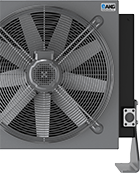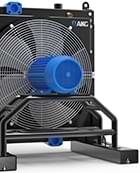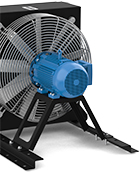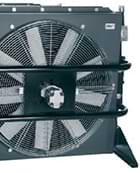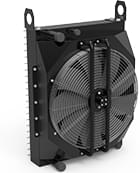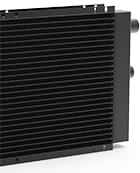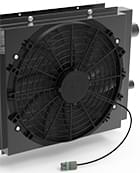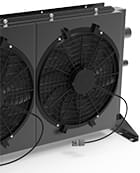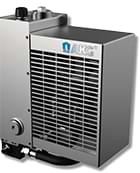AKG Coolers for Mining Equipment
Without effective cooling, heat can lead to equipment overheating, component wear, and costly downtime. Oil coolers work by dissipating heat from lubricants and hydraulic fluids, maintaining the ideal operating temperature for critical systems. This ensures equipment runs efficiently, reduces the risk of mechanical failures, and extends the lifespan of components. In harsh mining environments, reliable oil coolers are essential for sustained productivity and safety. Oil coolers are critical components in mining equipment, ensuring optimal performance and longevity under demanding conditions.
Hydraulic oil, often known as hydraulic fluid, acts as the vital component of hydraulic systems in mining equipment. It's crucial to properly cool this hydraulic oil to maintain optimum system performance and avoid overheating, thus ensuring the smooth and efficient operation of mining machinery.
Hydraulic oils used in mining equipment are specially formulated fluids designed to convey power and lubricate mobile parts within the hydraulic system. There are several types of hydraulic oil, each with particular properties that are suitable for a range of applications and operational conditions. Among the commonly used hydraulic oils in mining equipment are mineral-based oils, synthetic oils, and biodegradable oils. The selection of hydraulic oil hinges on factors like temperature range, viscosity requirements, and environmental impact considerations.
Types of Mining Equipment that Use Hydraulic or Engine Oil Coolers
Here are some examples of construction equipment that rely on oil coolers:
- Excavators: Versatile and essential in mining operations, excavators are used to dig through overburden, extract ore, and perform material handling. They come in various sizes, including compact, standard, and large models, and are equipped with different attachments like buckets or hammers to suit specific tasks.
- Bulldozers: With their large, heavy blades, bulldozers are designed to move massive quantities of earth or debris, clear land, and create access paths. They are also utilized for stockpile management, leveling terrain, and maintaining mining site stability.
- Loaders: Front-end loaders are key for lifting and transporting materials like rocks, minerals, or waste to haul trucks or stockpiles. They are valued for their speed and efficiency in repetitive material-handling tasks, particularly in open-pit mining operations.
- Haul Trucks: These heavy-duty vehicles are built to carry immense loads of material, often exceeding hundreds of tons. They are critical in transporting extracted minerals from the excavation site to processing plants or dump areas, and are specifically engineered to handle rugged terrains.
- Drilling Rigs: Used for creating precise boreholes, drilling rigs facilitate exploration to determine the location and size of mineral deposits. They also assist in placing explosives for blasting operations, ensuring efficient material fragmentation for easier extraction.
- Underground Mining Equipment: Specialized machinery such as continuous miners, shuttle cars, and roof bolters are designed for resource extraction in confined underground environments. These tools ensure safety and efficiency in mining activities by mechanizing tasks like drilling, hauling, and roof support installation.
- Crushing and Screening Equipment: Crushers reduce large rocks or ore into smaller, manageable sizes, while screens classify materials based on size. This equipment is essential in preparing mined materials for further processing, such as smelting or chemical extraction.
- Graders: Equipped with a long, adjustable blade, graders maintain haul roads by leveling surfaces, removing potholes, and ensuring proper drainage. Their role is vital for the smooth and safe movement of equipment and haul trucks within mining sites.

